For many young people in Paris, it’s a right of passage to live in a very small, very French type of apartment, called a “chambre de bonne.” Literally, a maid’s room. A chambre de bonne is usually one small room, on the top floor of a five- or six-story apartment building, and it’s usually just big enough to fit a bed and a table. It’s affordable housing in a city where finding housing is nearly impossible. But while cute, they are also cramped and can be unpleasant spaces for people who have to live there, a living embodiment of the gap between the rich in Paris, and everyone else.
The chambre de bonne has been around since the 1800s, and today, many people still live in these apartments because of the lack of affordable housing in the city. But the chambre de bonne is starting to disappear as a housing type. And many are wondering, where are those residents going to live?
 The chambre de bonne was invented during a major redesign of Paris in the 1850s. It was led by a man named George-Eugene Haussmann. He was commissioned by Emperor Napoleon III to overhaul the city’s architecture, as Napoleon wanted Paris to be “masterful”, and a “capital of the world”. To reflect these grand ambitions, Haussmann created wide boulevards and avenues.
The chambre de bonne was invented during a major redesign of Paris in the 1850s. It was led by a man named George-Eugene Haussmann. He was commissioned by Emperor Napoleon III to overhaul the city’s architecture, as Napoleon wanted Paris to be “masterful”, and a “capital of the world”. To reflect these grand ambitions, Haussmann created wide boulevards and avenues.
Haussmann destroyed working-class neighborhoods and replaced them with luxury buildings. Paris was a mess of construction for 50 years. Workers from all over the country came to serve Haussmann’s vision, creating some of Paris’s most iconic landmarks, like the avenue de l’opéra, the boulevard Haussmann, and the boulevard Voltaire.
But all of this construction was at a cost. In some cases, Haussmann cut buildings in half to make room for new ones. Some people called him “an artist demolisher”. Haussmann only designed apartments, because that’s where most people lived in Paris at the time. And he designed every apartment building to be the same, inside and out.
In Haussmann’s buildings, there was always one apartment per floor. And in those luxury buildings, the residents expected to have rooms to house their servants. Life was hard for these workers, and many of them were living inside their employer’s homes, which made them available to work 24 hours a day, with very few breaks.
A lot of young workers got fed up and returned home after life in Paris, exhausted and demoralized. Before the chambre de bonne, in the 18th century, servants lived in areas above the kitchen or the stables, save for chambermaids, who would sleep in tiny rooms near their employer’s bedroom. But the Haussmann redesign changed that.
Before Haussmann, Paris apartment buildings had small triangular roofs made of zinc. There wasn’t a lot of room to install an attic under these roofs, until Haussmann’s redesign included a series of sloped, mansard roofs, which contained a lot more potential for attic space. Haussmann created these sloped roofs because of something very mundane: municipal height restrictions. At the time, Paris had a height limit on new buildings of 65 feet. But the height limit wasn’t for the very top of the building, it was for the cornice line, where the roof begins. So the mansard roof was a hack, allowing a building to be taller without violating city laws.
The resulting triangular attics were large enough to house someone, though they weren’t desirable for the bourgeoisie living in Paris. Instead, the bourgeoisie decided to pay a little extra money for the space, and put their servants up there. That’s how the idea of the chambre de bonne was born. Instead of living with their employers, now maids and servants could live in a private space above them.
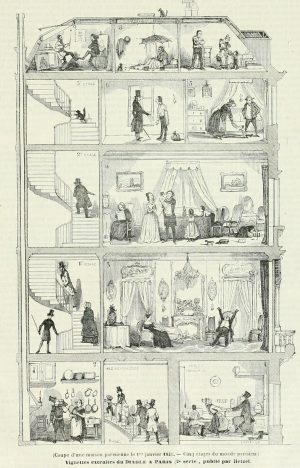 The original chambre de bonne was typically about 75 square feet. You could barely fit a bed in there. It was normal for these rooms to have one iron bed, a small table, a chair, and a small piece of furniture to store things. The only bathrooms or sinks were in the hallway.
The original chambre de bonne was typically about 75 square feet. You could barely fit a bed in there. It was normal for these rooms to have one iron bed, a small table, a chair, and a small piece of furniture to store things. The only bathrooms or sinks were in the hallway.
Finally, in 1904, a law was passed by the French government, so that all apartments had to be 86 square feet. The old chambre de bonne apartments weren’t allowed any more. The new apartments were still just about 9 feet by 9 feet, but it was an improvement. Slowly, the chambre de bonne apartments got even better. Landlords added windows and more toilets in the hallway.
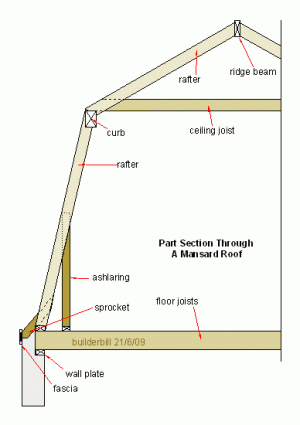 After World War 2, France developed a middle class. By mid-century, it wasn’t all servants and domestic workers moving to Paris to live in chambre de bonne apartments anymore. Now, it was a popular housing type for students and young people coming to the city for the first time. And they had higher expectations.
After World War 2, France developed a middle class. By mid-century, it wasn’t all servants and domestic workers moving to Paris to live in chambre de bonne apartments anymore. Now, it was a popular housing type for students and young people coming to the city for the first time. And they had higher expectations.
It wasn’t until 2002 that France passed another law to make apartments bigger, saying “no one should live in under 97 square feet out of decency”. In 100 years, Parisians only gained a few feet of space. Many of the existing chambre de bonne apartments were no longer in compliance, so many landlords decided to demolish the walls between two or three chambre de bonne apartments to make a single, larger living space. And that has created some very strange apartment layouts.
Against all odds, today, the chambre de bonne is becoming a valuable commodity. The price to rent a chambre de bonne has been going up in recent years. There are a couple of reasons for this, including the newfound popularity of elevators in Paris apartment buildings, as well as inflation and housing scarcity.
The chambre de bonne is becoming more expensive, but it’s also beginning to disappear as a housing type. In 1968, there were 66,000 people living in chambre de bonne apartments in Paris. According to the most recent public data, that number is down to just over 17,000. A big reason for this is people with money taking old chambre de bonne apartments and renovating them. In fact, today, some wealthy Parisians will buy up a whole floor of chambre de bonne apartments and make them into one big living space. The apartments have gone from cramped living quarters for poor people, to some of the most valuable real estate in Paris.
Paris is a dense and historic city, where it’s actually illegal to construct high rise buildings. And with a lack of housing stock, the price of housing keeps going up. The chambre de bonne could be a useful part of the solution for this, because many of them sit empty. As of 2015, 85% of the chambre de bonne apartments in Paris are vacant. Many chambre de bonne are just too small to be lived in, but some housing advocates believe renovations could put these old rooms to a new use.


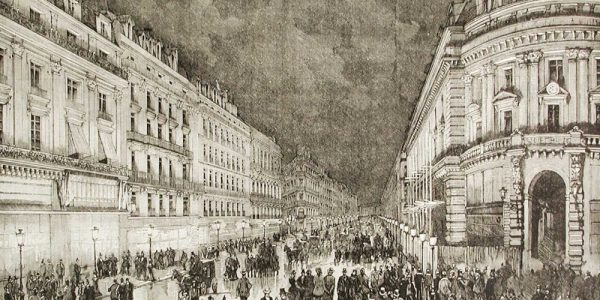
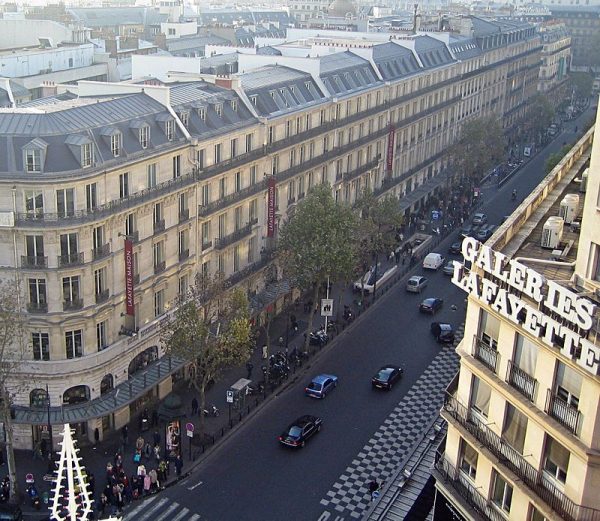
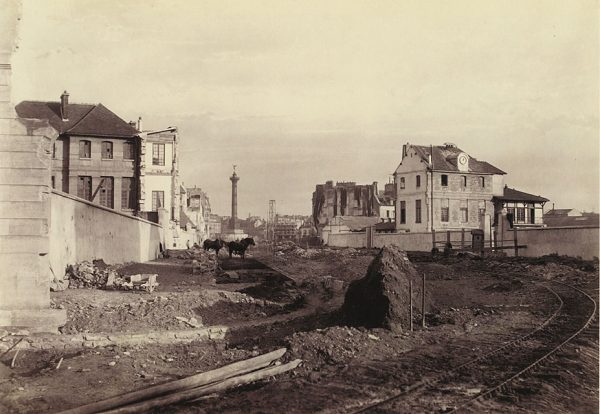
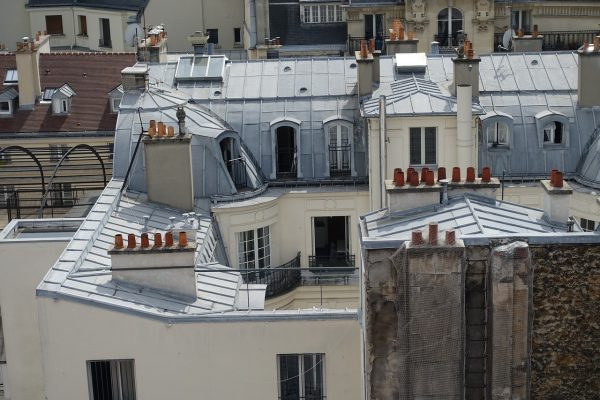

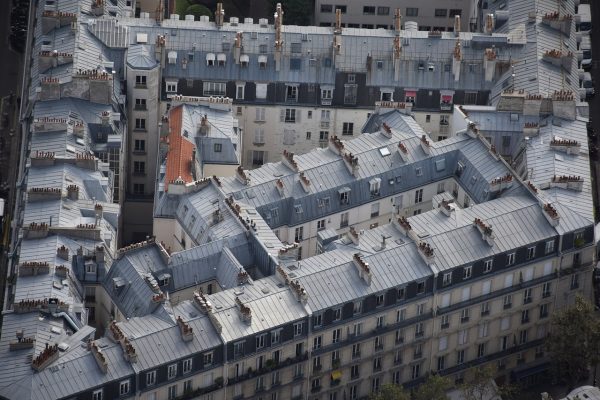



Leave a Comment
Share